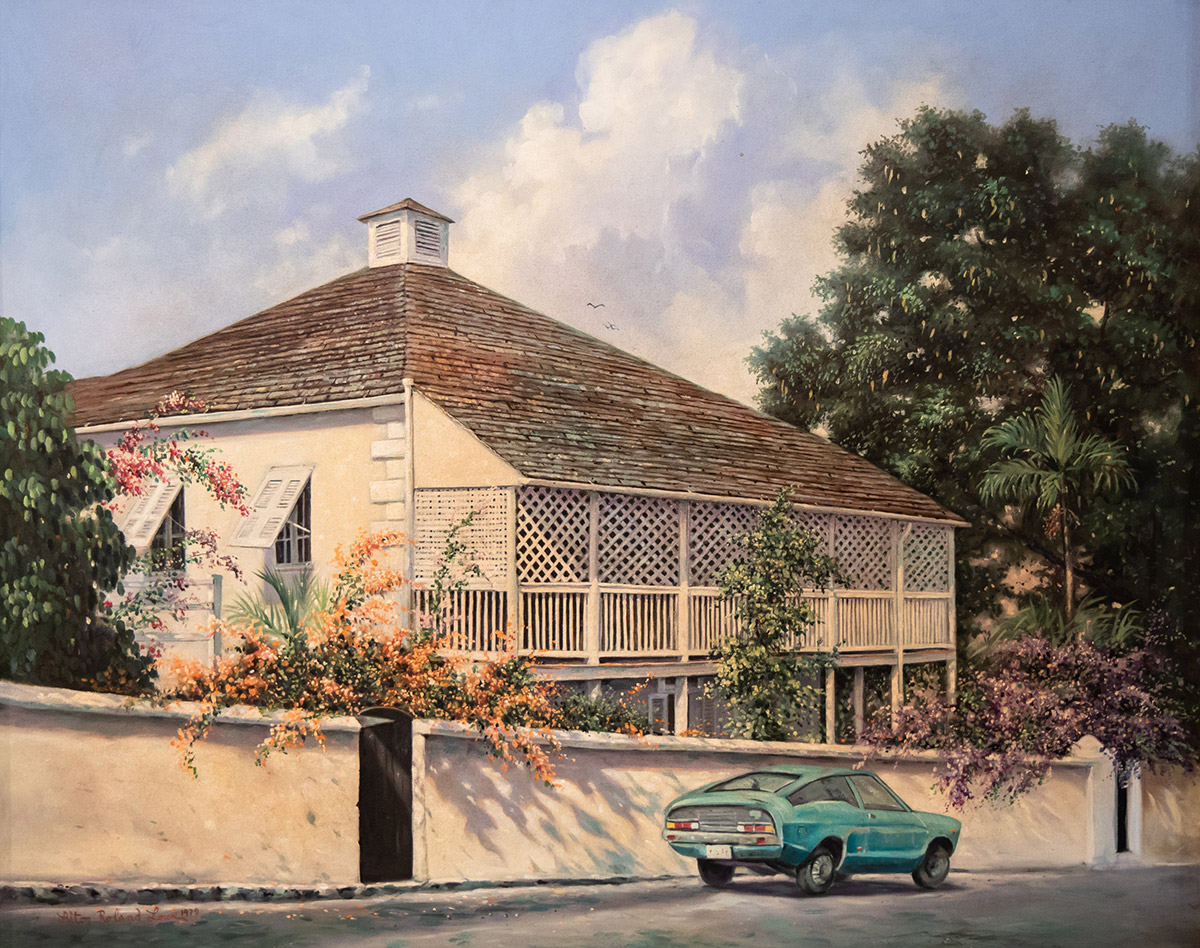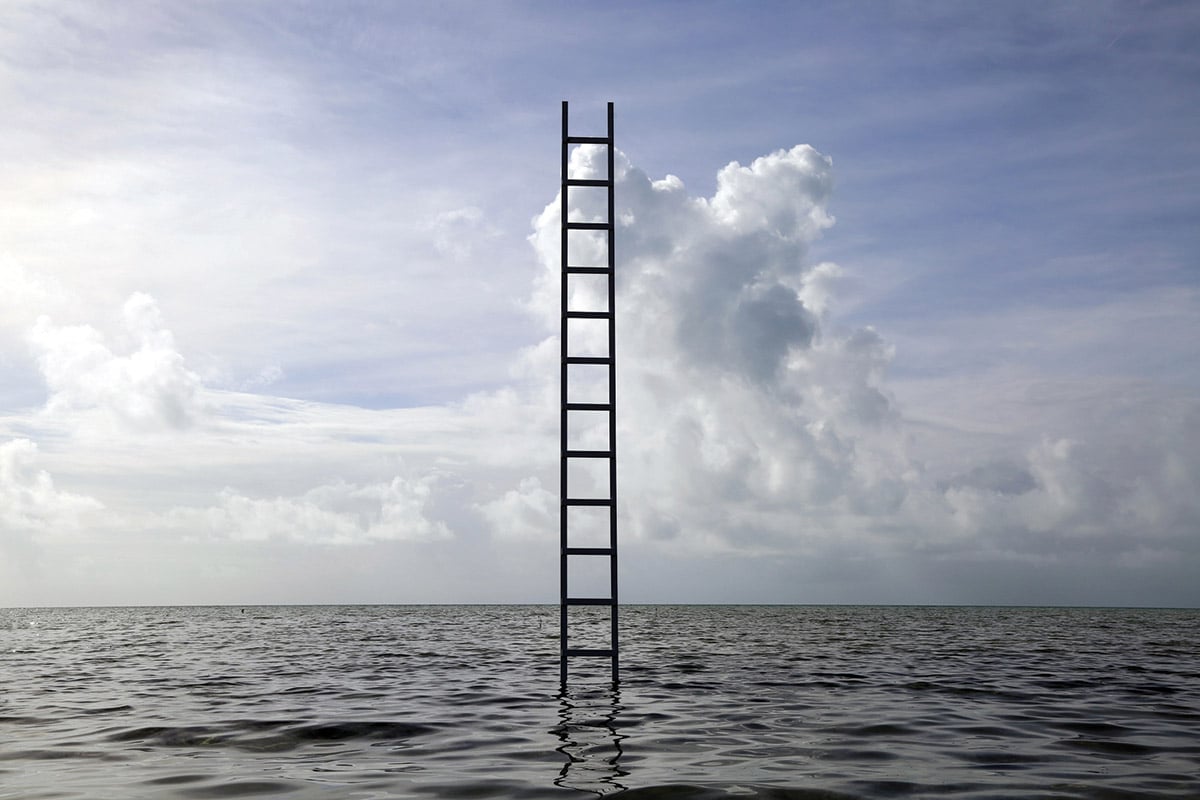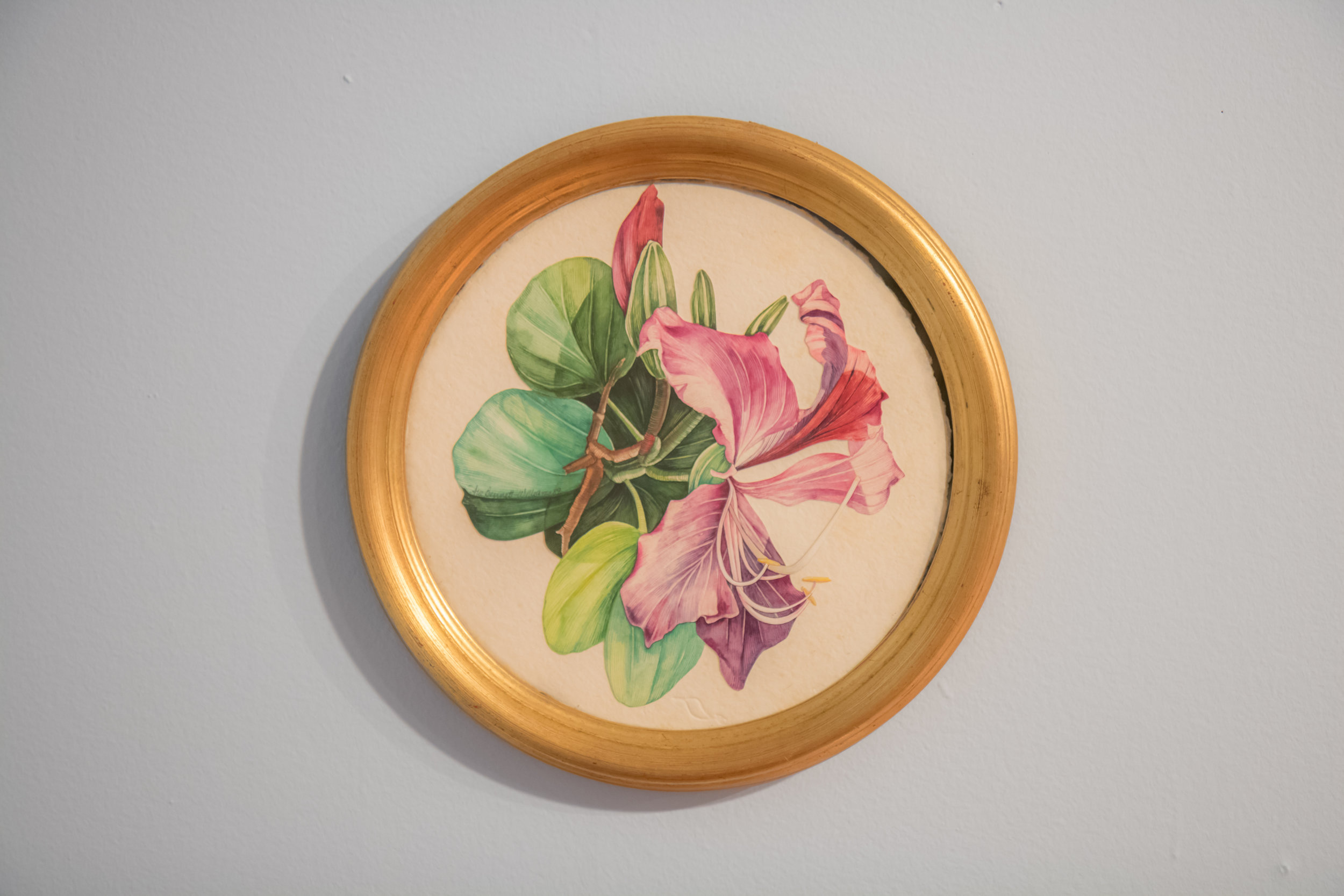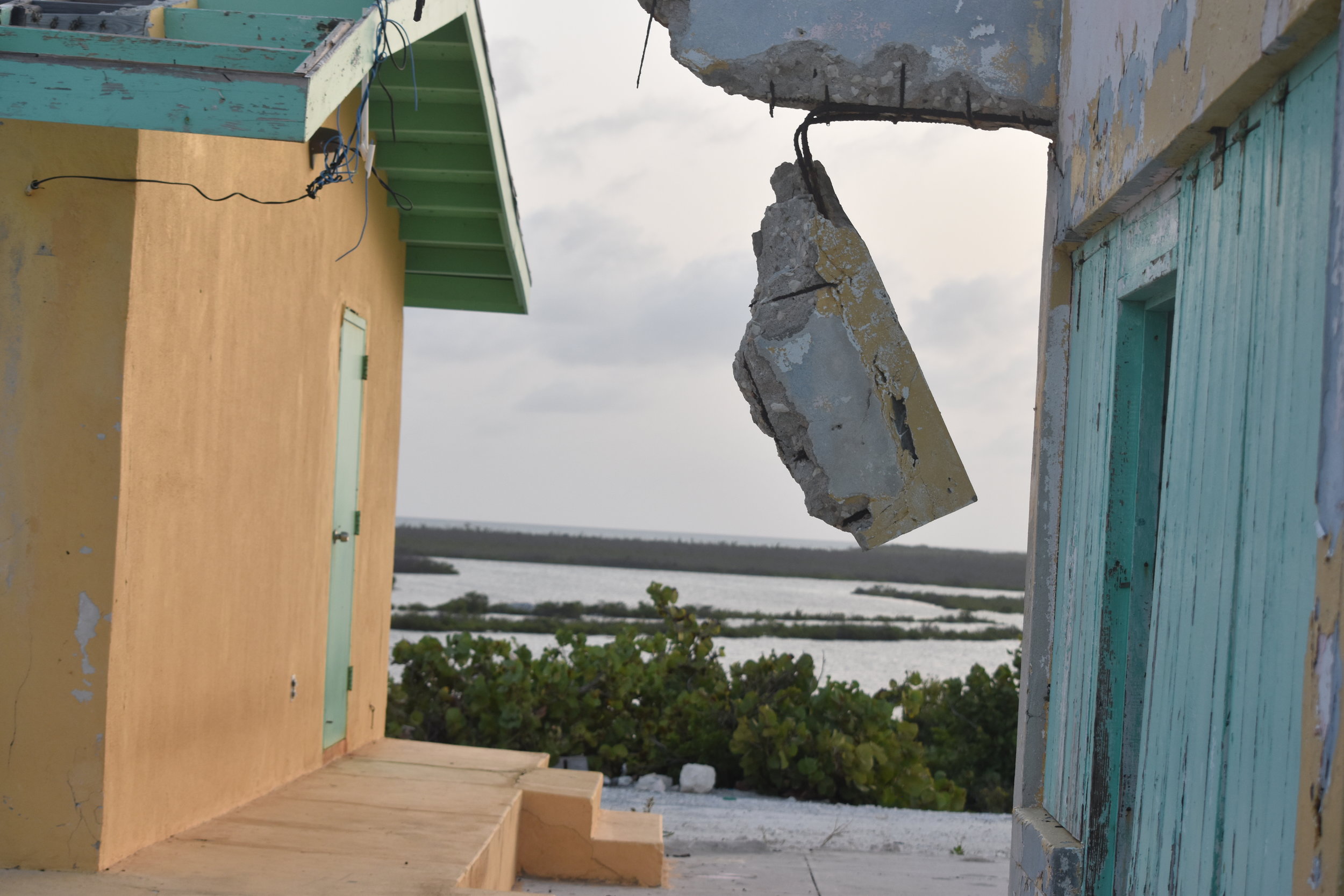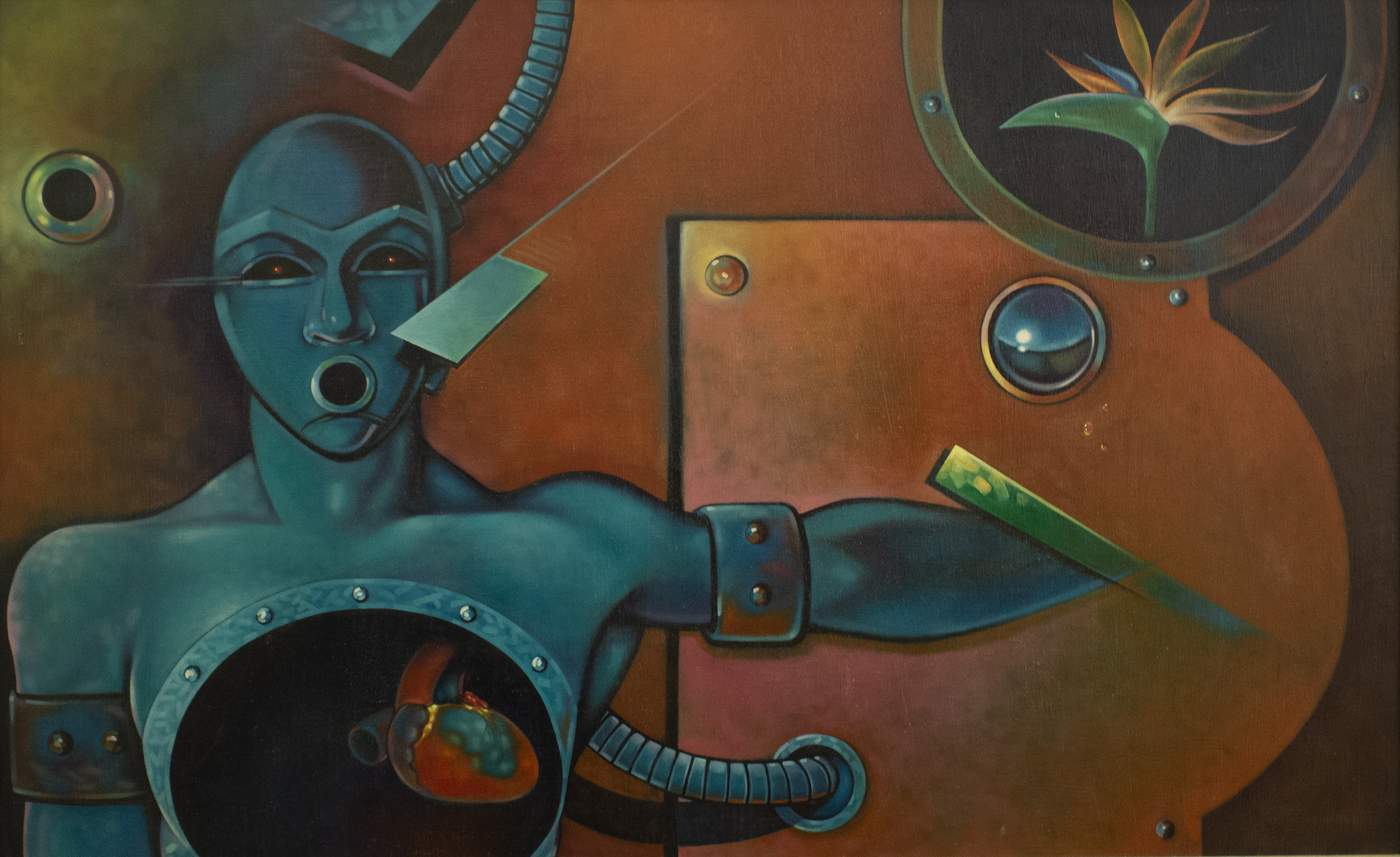By Blake Fox. Conservation of artworks is a crucial tenet of museums. Richardo Barrett, the curator of the new re-hang of the NAGB’s Permanent Exhibition (PE), “TimeLines: 1950-2007,” has worked in the Bahamian visual arts community for six years. In a speech at the unveiling of the new hanging, he noted the broad range of materials that he has encountered—including art made from sturdy ceramic, over to ephemeral seeds. Barrett further expressed his interest in—and the importance of—the survival of these materials for years to come. The conversation surrounding materials–the impermanent and the enduring–has been crucial in the curation of the recent rehanging of the Permanent Exhibition. The museum is having to ask and answer difficult questions around how we conserve works to ensure that they survive–especially in our tropical, humid climate–for generations to come.
Currently browsing: Articles
From the Collection: John Paul Saddleton’s “West Hill Hidden Garden”
The Daily Escape
By Diana Sands. When the new Permanent Collection Exhibition opened on August 5th, 2019 at the National Art Gallery of The Bahamas, I was immediately drawn to John Paul Saddleton’s West Hill Hidden Garden painting. Something about it spoke to me in a profound way. As a result, I found myself going back to see it many times since (often when I should have been working). The contrast of the darker hues of the shade against the bright airy light of day in the background continues to tug at my imagination. In truth, it has become a bit like a seductive loadstone.
From the Collection: “The Deanery” (1979) by Alton Lowe
Epistemic and Cultural Violence: Powercutting as Light
Anibal Quijano (31 May, 2019) and Toni Morrison (5 August, 2019) – two great thinkers have gone. Nicolette Bethel’s 1990 play, Powercut, produced and performed at the Dundas Centre for the Performing Arts, shows what happens in the dark. Nowadays, lights drop into darkness at least once a day for hours at a time. The violence of structures invisible to the naked colonised eye is only ever gossiped about. We are afraid to cease being what we are not, we do not know how to be who we are. It is the culture of violence and silence revealed through ‘discussions’ around tourism and prostitution, two interlocked economies of pleasure. The Victorian Bahamas avoids discussing these things in the same breath, yet the exoticisation and tropicalisation of space and place speaks to a reality of total erasure of self for what we are not, to pick up on Quijano’s statement. In “The Visual Life Of Social Affliction,” the upcoming Small Axe Project exhibition which opens at the NAGB on Thursday, August 22nd, we see what we are taught/made not to see; we see the violence of not seeing who we are and the trauma of being held in bondage through invisible structures. Powercut reveals a lot of the invisible structures, as do the works of recently departed thinkers Anibal Quijano and Toni Morrison.
The Visual Life Of Social Affliction: Structures of Violence in the Caribbean
Structural violence is rife and regionwide. At least we are here, even if we may be. In Bahamian artist Blue Curry’s “The New Riviera”(2014), we are not even here. This erasure of us from the scene is yet another form of unperceived structural violence, as we can also see in Curry’s “Nassau From Above” (2004).
From the Collection: “Poor Man’s Orchid” (1989) by Sue Bennett-Williams
By Natalie Willis. a portal into the practice of a dedicated educator. The 19th Century marked a period in Britain known as Orchidelirium. Not entirely unlike the Dutch tulip fever, this flower-frenzy was a mad scramble for the exotic, elusive orchid. They became connotative as a symbol of wealth, prestige and knowledge, of the affluence required to secure these items from far-off lands. Sue Bennett Williams’ “Poor Man’s Orchid” (1989) is no such thing and no less beautiful.
Finding Our Voices: Resisting Violence and Oppression
By Dr Ian Bethell Bennett, The University of The Bahamas. “I could be bounded in a nutshell, and count myself a king of infinite space, were it not that I have bad dreams.” – Hamlet, II.ii. Is it a bad dream, a nightmare provoking somnambulance? We all think the best of green gentrification because we have been taught, in spite of the climate sceptics, we need to do something to improve our resilience. We are also told by the media that while people know about climate change and the havoc it plays in their neighbourhoods, jobs are more important because many of us are one paycheque away from poverty.
From the Collection: Jolyon Smith’s “Transformation” (1987) and imagining Black Bahamian futures
By Natalie Willis. Jolyon Smith’s Transformation (1987) is one of the first works collected for the National Collection at the NAGB, shown in the Inaugural National Exhibition or the INE. To have a work that appears so afrofuturist in its aesthetic speaks volumes for the genre and also for the nascent years of the NAGB in thinking what a National Collection could and should look like. What does a Black future look like, and a Bahamian one at that?
Designing for Space: Working with Possible Futures in Mind
By Dr Ian Bethell Bennett,The University of The Bahamas. Colonialism and coloniality in design occur when little is left of the past to remind us of the physical reality. On a recent trip to Cape Town, I had the pleasure of enjoying two spectacular spaces of art and design that showed how important it is to think through purpose and landscape and how the beauty of both can be made functional in the spaces created. I had the pleasure of stumbling into a nursery that doubled as an apparent antiquarian. The space was large and well-designed with room to breathe. Form and purpose combined with the art of design to speak to concepts of natural beauty, much like the wave design at the London Aquatic Centre at Stratford designed by Zaha Hadid especially for the 2012 Olympic games and constructed by Balfour Beaty; the perfect example of form, design and purpose merging and blurring lines of functionality and beauty.
From the Collection: “Untitled (Rake Bird)” by Tyrone Ferguson
By Natalie Willis. Metal is a tricky medium. It’s industrial, ceremonial, it can be strong enough to build bridges or soft enough that your very teeth could dent it. For Tyrone Ferguson, he doesn’t seem to find these traits something to work against, rather he works with his medium intuitively, sensitively, and brings some spirit back into metalwork and blacksmithing.


